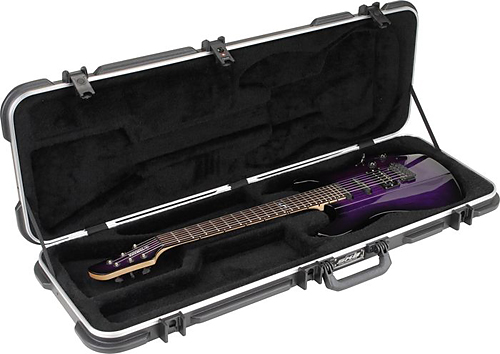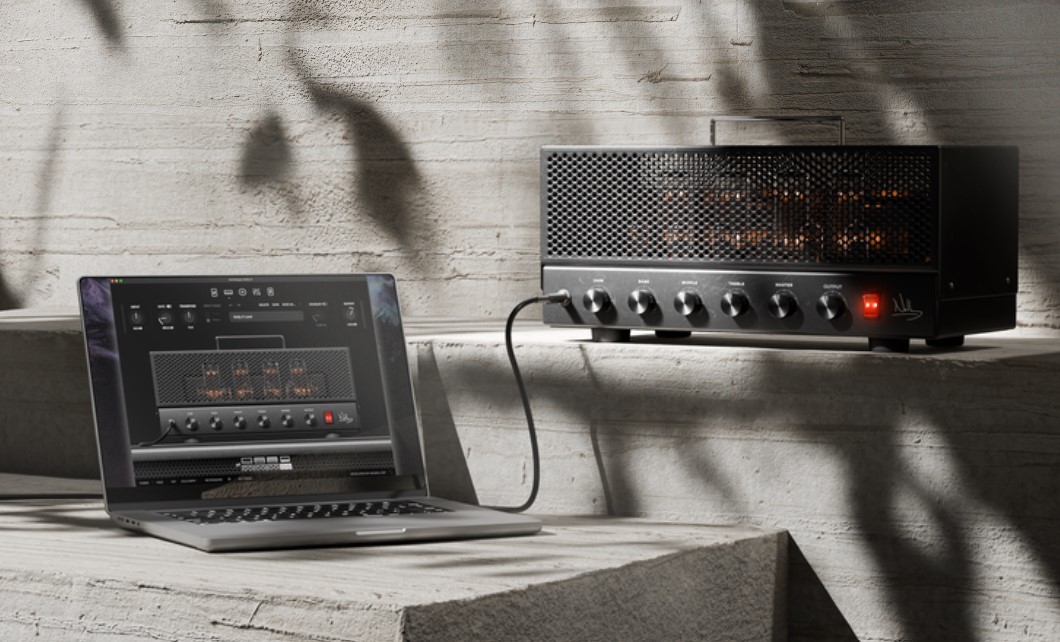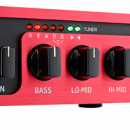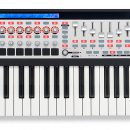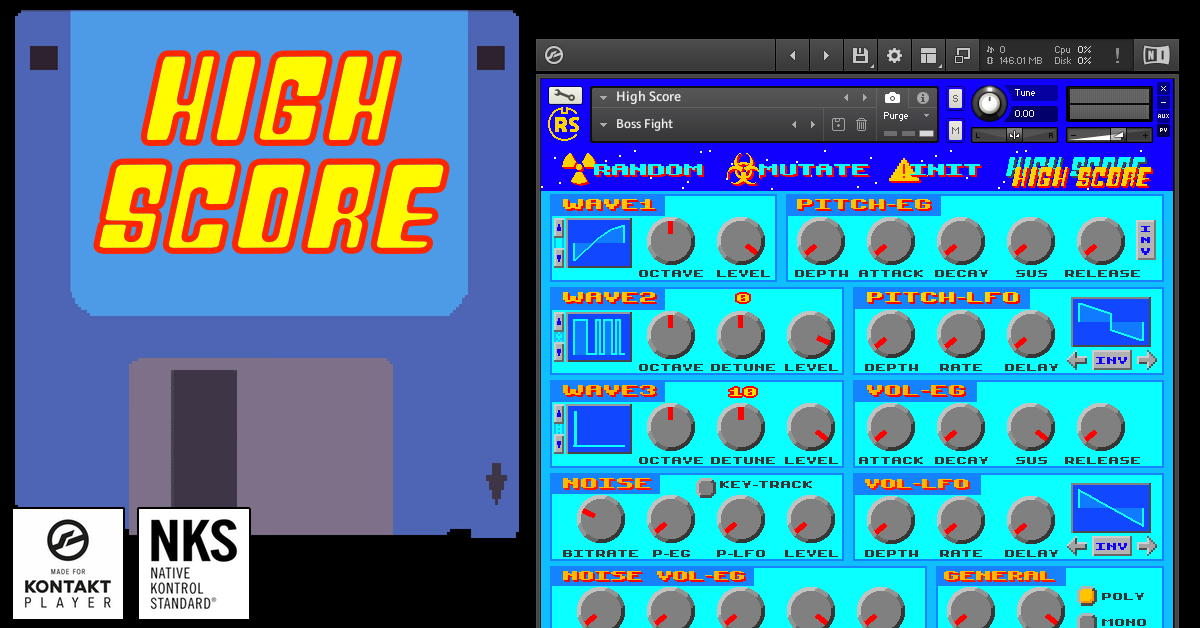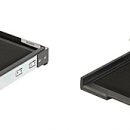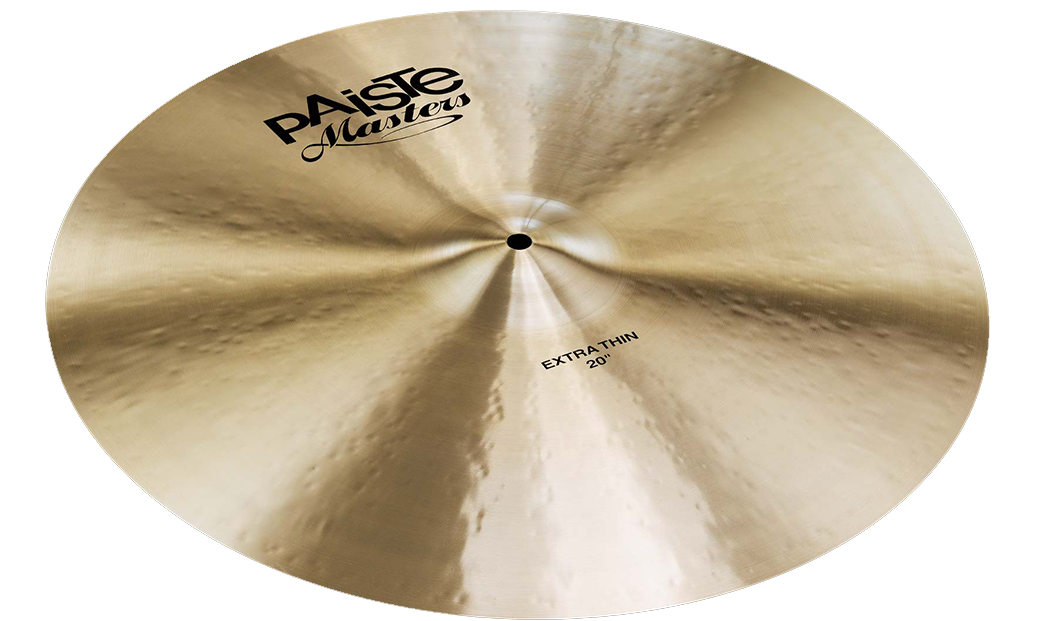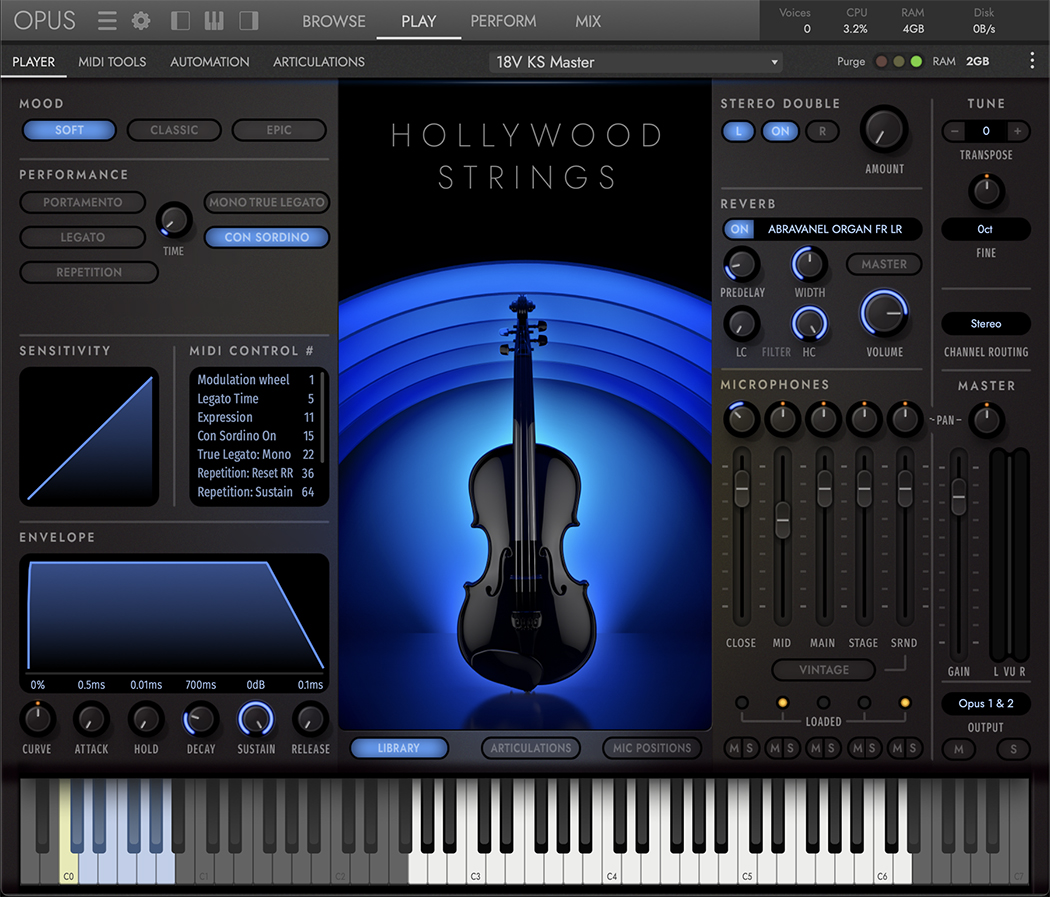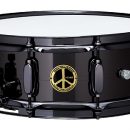 We always fantasize about cutting the cord and separating from the amp, only to realize later that it was better to stay wired. In our previous review of the first generation X2 XDS95 Digital Wireless System, our thoughts on making the decision to go wireless were forever changed.
We always fantasize about cutting the cord and separating from the amp, only to realize later that it was better to stay wired. In our previous review of the first generation X2 XDS95 Digital Wireless System, our thoughts on making the decision to go wireless were forever changed.
Since the acquisition of X2 by Line 6, there have been numerous upgrades made to an already great wireless product that make it even more of a “no brainer” to consider going wireless if you’re still relying on instrument cables.
| Category | Value | Rating |
| Features | 20% | |
| Usability | 25% | |
| Sound | 25% | |
| Documentation & Support | 10% | |
| Price | 20% | |
|
|
||
| OVERALL RATING = 3.7, which earns it a WIHO Award! 3.6 stars or better: Outstanding, WIHO Award 3 stars or better: Worth considering 2 stars or better: Suited to specific needs 1 star or less: Not recommended |
||
The funny thing is that just when you think a product sounds as good as a wired solution, along comes the next evolution of the technology and you hear things you didn’t notice before. The new model’s ability to attenuate high frequencies to simulate tone changes from lengthy guitar cables is a very cool addition.
This is a worthy upgrade from the X2 units if for no other reason that it now uses AA batteries instead of inconvenient 9V cells. Rechargeable AA batteries are much more readily available, and the new models run for up to eight hours, another nice improvement.
Features
The Line 6 Relay G50 and G90 Wireless Guitar Systems share many of the same features with the exception of their construction design and few functional differences.
Operating features are as follows:
|
 The Relay G50 Wireless System features the RXS12 receiver, which is a metal stompbox-style design constrating with the Relay G90’s RXR12 receiver, a one-space metal rack design. Besides the obvious difference in size, the RXS12 and RXR12 receivers provide some slightly different operating features as well.
The Relay G50 Wireless System features the RXS12 receiver, which is a metal stompbox-style design constrating with the Relay G90’s RXR12 receiver, a one-space metal rack design. Besides the obvious difference in size, the RXS12 and RXR12 receivers provide some slightly different operating features as well.
Both Receivers provide a 24-bit Delta Sigma D/A converters and an LCD display indicating channel selection and battery life. The differentiating features of each Receiver are as follows:
| Features: | RXS12 Receiver | RXR12 Receiver |
| Connections | ¼-inch output, Tuner pass-thru | XLR, ¼-inch output, Tuner pass-thru |
| LED Display | Power On, Data Link, Audio Status | Audio Status, Transmitter Battery Life, Mute, RF |
| Controls | Channel Select, Cable Tone Simulator | Power On/Off, Channel Select, Cable Tone Simulator, Setup |
| Power Supply | 9VDC | IEC Connector |
Line 6 TBP12 Wireless Transmitter Body PackThe Relay G50 and G90 come equipped with the same TBP12 Wireless Transmitter. Features of the transmitter include a 24-bit Delta Sigma A/D converter, TA4F connector, power On/Off switch, channel selector, LED display for view of power and audio status, and an LCD display indicating channel selection and battery life. Two AA batteries power the TBP12 transmitter, a noted improvement over the previous generation’s use of 9V batteries.
Usability
 TBP12 Transmitter:
TBP12 Transmitter:
The TBP12 transmitter is supplied with both Relay G50 and G90 Wireless Guitar Systems. We found this transmitter to be extremely functional and easy to use. Starting with its metal casing, the unit is designed to take the challenges of stage performances night after night. And unlike many competing transmitters, the TBP12 does not contain a dangling wire antenna but instead uses a molded high output antenna stub eliminating your worries of accidently ripping that antenna out of the unit during your stage acrobatics.
To make the unit easier to handle and grab a hold of, the outer edge of the unit is wrapped in a rubber bumper with ribbed grips. You’ll need that extra grip in order to remove the unit from your belt or strap when you see how tightly the metal belt clip holds on — no worries of it sliding off your strap.
All functional aspects of the unit are well marked and easy to read due to their silver lettering over black background. The LED and LCD displays are easily viewed by their bright lighting, especially the backlight of the LCD screen. Everyone knows what a nuisance it is to have a non-backlit display on a dark stage.
The transmitter uses a TA4F instrument cable commonly found on various wireless units. One end has a three-prong female locking connector (at the transmitter) and a soldered ¼ inch connector to your guitar. The supplied cable is of high quality, unlike the cheap, molded cables provided with older units.
The TBP12’s use of two AA batteries also improved performance, delivering enough juice to operate for up to eight hours. But for those of you who use rechargeable batteries — which should be all of you, you’ll want to make sure the batteries are true to size of normal batteries. The battery compartment is cylindrical, and in our exchange of rechargeable batteries, we found that not all brands of batteries fit into the compartment! Fortunately, our Duracell rechargeable batteries did fit.
When looking at the functional aspects of the TBP12, we found the unit extremely easy to navigate and operate. It’s the simple things that matter, like how all the pertinent controls are pointing up at you when clamped on your belt or strap and the connection cable is facing down towards your instrument. The On/Off button, Mute button, audio signal status and battery status LED are right there staring you in the face — no flipping the unit over or disconnecting to find what you’re looking for.
The LCD menu screen was easily navigated via two simple buttons – Select and Value. In order to enter the setup mode, the TBP12 requires you to hold down the Select button in order to enter setup mode. There are three basic menu options: Channel selection; Power selection; and Name, which allows you to name your transmitter when you have multiple wireless units on stage or your other guitar player uses the same wireless unit.
The TBP12 gives you twelve channels to choose from to ensure you can find a clean, uninterrupted signal path. The Power section allows you to choose between “High” or “Low” power settings. High power will give you the strongest, cleanest signal where the low setting will focus more on saving battery life. We didn’t notice any differentiating sound qualities between the power settings, but surely this would make a difference in a highly active wireless environment where interference could be an issue. And to ensure changes are not made accidently, the unit has a lock feature that can only be engaged when holding down both Select and Value buttons at the same time.
The TBP12 transmitter’s LCD screen displays how much battery life is remaining. The original X2 XDS95 measured battery life in one hour increments defined by a segment of five blinking lights (for each hour of operation), but the TBP12 gives you a more useful digital readout of the actual play time remaining in hours — up to eight hours in the new models.
The RXS12 and RXR12 receivers display battery life, too, but they use a segment of LEDs for quick visual notification. This is handy in the live setting since it’s not really convenient to look at your transmitter while it’s strapped to the back of your strap during a performance, but a quick glance at some colored lights may be all you need to see. The three LED indicators communicate the following:
- 3 Green = Full charge
- 2 Green = Excellent charge
- 1 Green = OK charge
- 1 Red = Low charge
- Flashing Red = Very low charge
RXS12 and RXR12 Receivers:
We found the Relay G50 RXS12 receiver to be extremely easy to use. The stompbox-style receiver is similar in size to a typical effects pedal with the added feature of removable antennas. Powering the RXS12 requires 9V DC, and Line 6 includes a power pack with the unit. Connection points of the RXS12 include a Tuner/Aux Out and a Main Out to run to your amp or other pedals.
The face of the RXS12 is very basic but contains all the essentials – much like the TBP12 Transmitter. The two LEDs at the top of the unit provide audio and power status. The other set of LEDs provide the status of the transmitter. We found this to be an excellent feature providing detailed indications of signal level and battery level.
There are two dial controls provided on the RXS12 – the top knob providing cable tone simulation (Off, 15ft, 30ft, 45ft, 100ft) and the bottom knob providing channel selection (Channel 1 through Channel 12). The cable tone simulation provided actual high-end roll-off as we increased the length of the cable simulation. The tone definitely became darker without losing its definition or becoming too dull. And as far as channel selection, if you can’t find a clean one in any of the twelve channels provided, give it up — you’re probably sitting in a large microwave oven.
The Relay G90 RXR12 Receiver (rack unit) contains all the same features as the RXS12 plus some added bells and whistles. First off, you have the convenience of front or rear antenna mounts. Or, you can use the additional mounts to daisy chain multiple Relay G90 receivers to share a set of antennas.
Connecting both front and rear antennas will activate antenna diversity. Unlike the stomp box receiver, you also have a power switch and an RF LED indicator to help analyze your environmental conditions. And last but not least, the RXR12 provides an optional XLR output connection along with the standard ¼ inch connection. The following functional items are similar to the RXS12 receiver: Tuner/Aux Out, Main Out, Transmitter Status display, audio and battery LEDs. We found all these functions to supply excellent indications of the operating environment to ensure proper transmission of the signal.
The only dissatisfying part of the package we found was that the RXR12 receiver did not include the extra set of antennas necessary for taking advantage of the antenna diversity functionality – you’ll need to purchase an extra set separately.
Much like the TBP12 Transmitter, the RXR12 provides an LCD screen to scroll through your menu options including channel selection, cable tone simulation, antenna selection and contrast. A nice bonus effect of the rack unit’s LCD screen is that you can choose the color of the backlight: red, green, yellow, blue, pink, teal, and white. We found editing to be very simple and intuitive.
Sound
We tested both the Relay G50 and G90 using multiple guitars (Telecasters and Les Pauls) with varying pickup configurations along with multiple amplifiers from Mesa/Boogie, Bogner, and Marshall to really get a good perspective of the units’ sonic capabilities. In all testing configurations, the Relay G50 and G90 delivered excellent cabled tone.
The cable tone simulator really provided that darker tone you might normally experience from high-frequency roll-off when using longer cable lengths. If you like your existing sound and rely on a twenty-five foot long instrument cable, this can restore the signal degradation that you lovingly dialed into your tone, but would have been removed when making the switch to wireless.
The Relay G50 is rated at 200 feet “line of sight” for optimum performance and the G90 is rated at 300 feet “line of sight.” Both units performed within their operating range without any sign of signal dropout or degradation. The tone stayed consistent throughout the entire operating range.
As far as any upgrade in sound quality compared to the X2 XDS95, the differences are marginal, and in typical use outside of the studio we didn’t hear much of a difference. Sonically, the original X2 system covered 10 Hz to 12 kHz, with 117 dB of dynamic range. The new units expand the high-end up to 20 kHz, which can make a subtle difference for players who live and die by their sparkly, glassy, clean tones, but bass players will likely not hear any difference. Dynamic range was also expanded slightly to 120 dB. Subtle enhancements, clearly, so don’t feel like you have to ditch your older X2 because of a radical improvement in sound quality.
Documentation and Product Support
Line 6 provides well-documented user manuals with the Relay G50 and G90 wireless systems to ensure a happy relationship from the start. But even without the manuals, these units are pretty much plug-n-go.
The documentation includes detailed illustrations and definitions of each control feature to help you get acquainted with the unit for ease of setup and operation.
Each unit has a one-year warranty and Line 6 provides every element of product support necessary via their website.
Price
The Relay G50 Wireless Guitar System (MSRP $559.99) can be found for just under $400 and the Relay G90 (MSRP $839.99) can be found for just under $600.
Both units to provide excellent value when considering the sound quality and excellent engineering and design. You’ll need to decide which design best fits your specific needs, but either way, go ahead and ditch your cable already.
Contact Information
Line 6
www.line6.com
| Evaluation Short-List |
|



